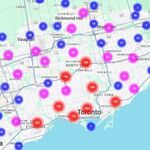DSC
Superstar
Member Bio
- Joined
- Jan 13, 2008
- Messages
- 19,631
- Reaction score
- 28,090
- Location
- St Lawrence Market Area
I also live near King & Jarvis and must say I think that the far-side stops actually work far better but this is the wrong way to look at these things. We all have our personal experiences and need to step back and look at real comprehensive data. Take a look at Steve Munro's analyses (and more are coming). Also, who 'transfers from Queen" to King in the KSP area - apart from the distance it is not a 'legal' transfer.Where was it it said that this is likely to happen as you're alluding to? Is this to be similar to the red light cameras?
On another note, talking to my sister who lives near King and Jarvis, she said that having the stops after the lights is a huge detriment. Often, the first street car takes so long to load, unload, there is a back up of streetcars that are stuck behind the light. And they can and will not anybody off. So you could be waiting a few traffic light cycles just to get off adding to the total commute times. Anybody transferring from Queen as well has to also walk very far adding to the inconvenience











